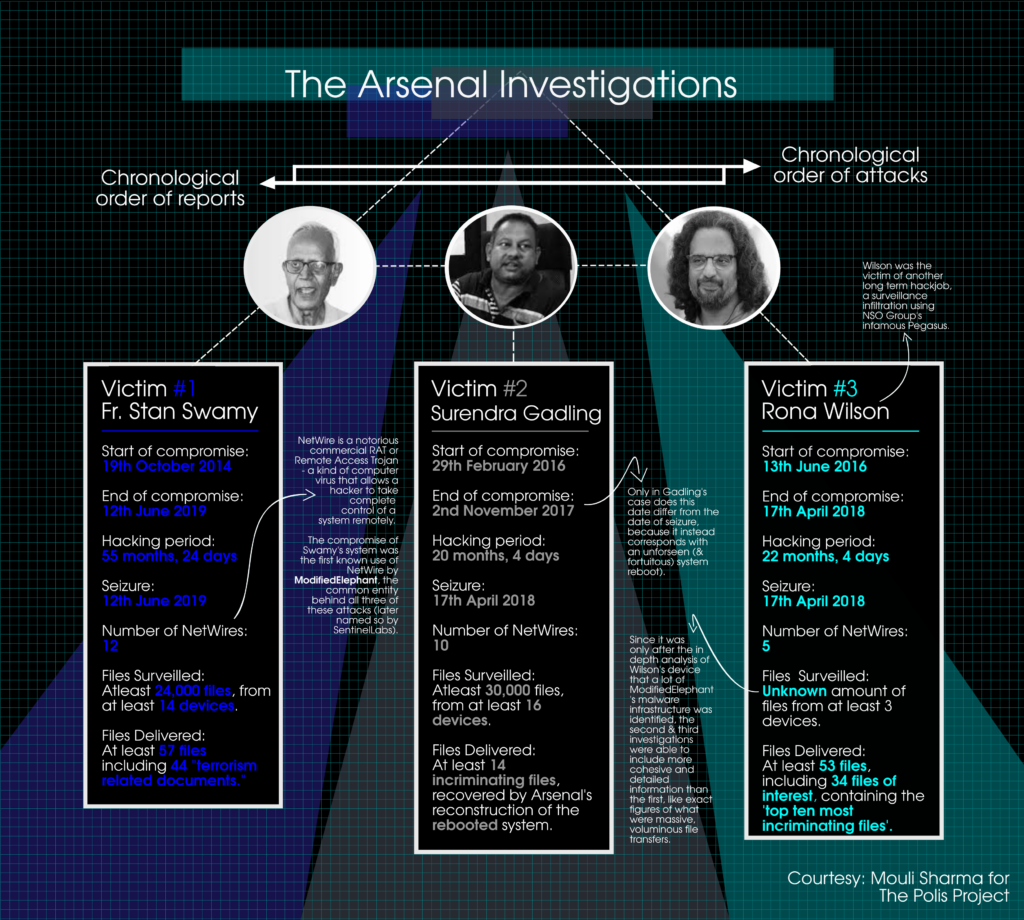
How an unsophisticated malware attack became India’s biggest state-sponsored cybercrime

This is the third report in a three-part investigative series on the Elgar Parishad/Bhima Koregaon case. Read part one here and part two here.
In October 2014, five months after the arrest of the professor GN Saibaba, Stan Swamy’s computer was hacked. Unbeknown to the world, the nascent stages of investigation against the prime accused in the Elgar Parishad case, who came to be monikered the BK-16, had already begun in 2014—four years before any of the arrests even took place. The unknown attacker used a Remote Access Trojan—or RAT—sent through targeted phishing emails to compromise Swamy’s computer. A Trojan is a type of malware that downloads onto a computer disguised as a legitimate programme. The virus found in Swamy’s computer, then a recent but exciting entry into the world of commercial malware, would go on to become one of the most notorious Trojans of the 21st century: NetWire. At that time, both the attacker and their chosen malware were threat elements on the lower tiers of the cybercrime trade in terms of both…
Related Posts


Donald Trump’s Master Economic Plan I Opinion by Yanis Varoufakis




